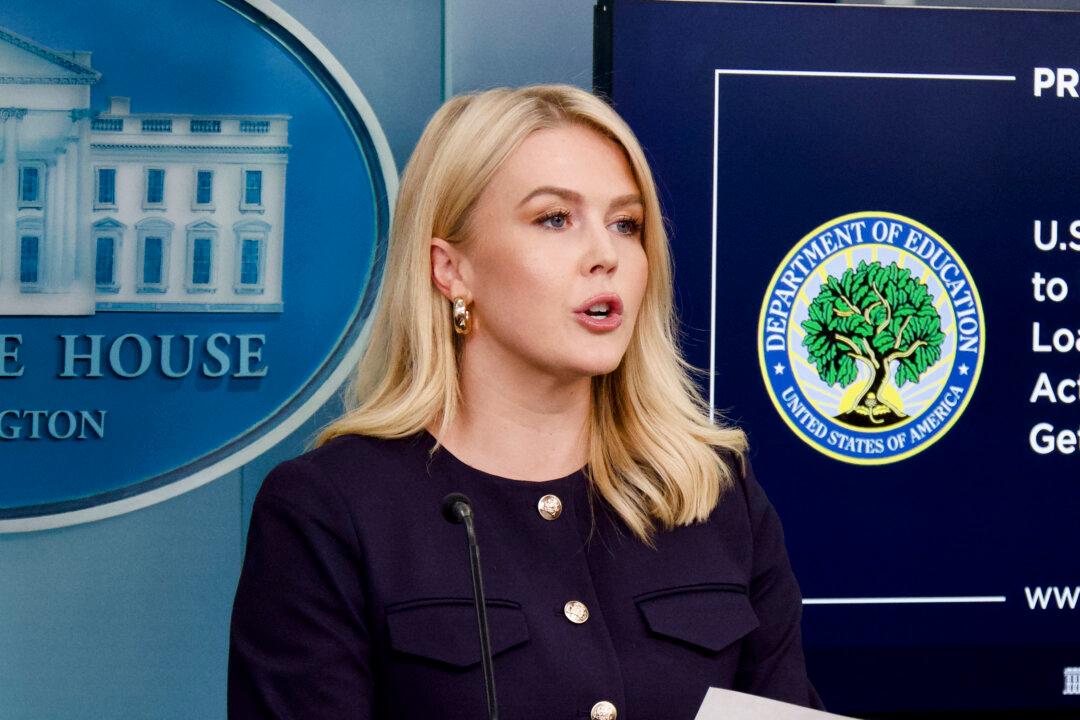U.S. stocks surged on April 23, as President Donald Trump clarified his stance on Federal Reserve Chair Jerome Powell and China tariffs.
Following the weeks-long tariff-driven decline in the financial markets, Wall Street is looking to build on its April 22 gains after all three leading benchmark averages climbed nearly 3 percent.
“The press runs away with things. No, I have no intention of firing him. I would like to see him be a little more active in terms of his idea to lower interest rates,” Trump said at a swearing-in ceremony for new Securities and Exchange Commission Chair Paul Atkins.
Over the past several days, Trump highlighted his frustration with the Federal Reserve’s lack of monetary policy easing, criticizing Powell.
The stock market plummeted after these comments.
“Stocks, bonds, and the U.S. dollar all dropped on Monday following an escalation of verbal attacks by President Trump on Fed Chair Powell and that created yet another source of policy uncertainty for markets to consider (something we absolutely don’t need right now),” Tom Essaye, founder and president of Sevens Research Report, said in a note to The Epoch Times.
“I don’t think he’s doing the job. He’s too late, always too late and slow,” Trump told reporters. “And I’m not happy with him. I let him know it, and if I want him out, he’ll be out.”
Powell and his colleagues have left interest rates unchanged this year in the range of 4.25–4.50 percent. The Fed has paused its rate-cutting cycle for three consecutive meetings to observe the economic landscape and await greater clarity from the administration’s policy changes.

Powell stated in November that presidents are “not permitted under the law” to terminate members of the U.S. central bank.
Meanwhile, traders welcomed the White House’s more cordial approach to dealing with China.
Trump said he does not plan to “play hardball” with Chinese leader Xi Jinping, adding that his administration will “be very good to China.” A new agreement, Trump noted, will not include tariffs “anywhere near” as high as 145 percent, as the current tariff rate “will come down substantially,” he said.
The president’s remarks came shortly after Treasury Secretary Scott Bessent told a group of investors at a closed-door meeting in Washington that U.S.–China trade tensions could de-escalate soon.
Bessent, likening the current situation to an embargo amid sky-high tariffs, said he anticipates de-escalation by both sides in the “very near future,” a person in the room told The Epoch Times.
Tesla Watch
Meanwhile, shares of Tesla surged following the electric vehicle maker’s disappointing first-quarter earnings report on April 22.While the company reported a 71 percent decline in profits, the focus was on CEO Elon Musk’s declaration that he would scale back his involvement in the federal government’s Department of Government Efficiency (DOGE).
“I think I‘ll continue to spend a day or two per week on government matters for as long as the president would like me to do so and as long as it is useful,” he said. “But starting next month, I’ll be allocating probably more of my time to Tesla now that the major work of establishing the Department of Government Efficiency is done.”
Treasury Yields Fall, Dollar Rises
The U.S. Treasury market was mostly in the red, led by sharp declines in long-term interest rates.The U.S. dollar index edged up 0.2 percent to above 99.00. The index, a gauge of the greenback against a weighted basket of six currencies, has plunged this year, falling by close to 9 percent.
A potentially recovering U.S. dollar may want to thank the Treasury secretary, say ING strategists.
“Bessent’s seemingly conciliatory comments on a U.S.–China trade de-escalation could favor a U.S. dollar stabilization.”







